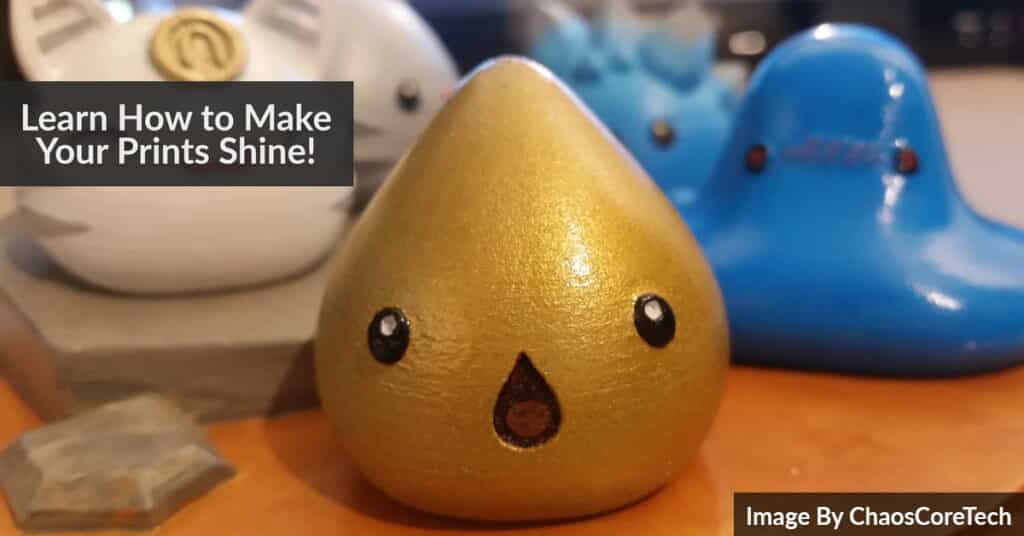
While designers often use desktop 3D printers to iterate and test their designs, sometimes the function of a 3D print is less about testing form, fit, or function and more about looking really great for presentation purposes. However, anyone familiar with using desktop 3D printers knows that there are certain drawbacks to the appearance of typical FDM 3D prints. Aesthetic issues with 3D prints will frequently boil down to one issue: surface quality.
There two most common issues with the surface quality of 3D prints from desktop 3D printers are layer striations and matte sheen.
This brings up a few questions when approaching post-processing 3D prints. How can we safely (without the use of very nasty chemicals/ acetone) smooth layer striations? How can we give a 3D print the appearance of a real injection mold or plastic part?
At Make Mode, our creative 3d printing studio in Brooklyn, we scoured Amazon and bought nearly every product we could find to test how to give PLA/ ABS 3d prints a nice, smooth glossy finish. We really didn’t want to mess with heating up awful chemicals like acetone. The products we used to smooth prints fit into two categories – brush applications and spray applications.

Here are some of the techniques and products that we’ve had success with:
XTC-3D and other Epoxies
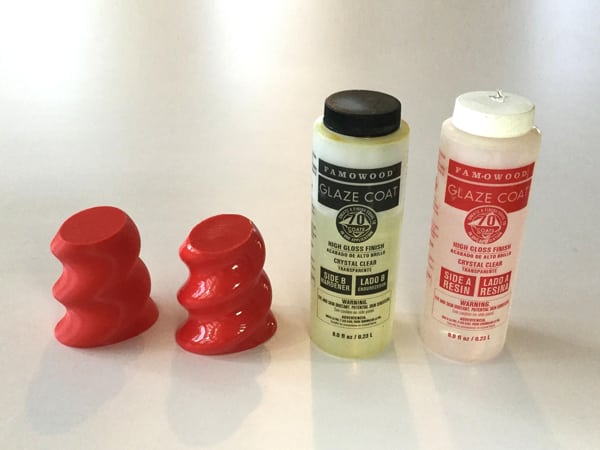
This two-part epoxy solution method is recommended for ABS and PLA prints. One part is a resin and the other part is a hardener. One epoxy that is marketed specifically for 3D printing applications is XTC-3D, which if nothing else, has a great name. However, other two-part epoxy solutions will also work.
Brushing on a clear gloss epoxy fills in the gaps between the layer striations, giving the surface a very shiny smooth finish.
How to apply:
- Prepare your workspace. Create an aluminum foil tray by layering 2 pieces of aluminum foil and folding the edges. This will be where you pour your mixed product to allow for longer working time.
- Measure out parts. This epoxy uses a 1:2 ratio of Part A to Part B.
- Mix Part B with Part A. Pour all contents into the plastic container, and vigorously mix together until they form a smooth, miscible blend. Pour the solution onto the aluminum foil plate.
- Using a paintbrush, apply a thin layer of epoxy (about .04 cm thick). The mixture will self-level once on the object.
- Allow the object to cure untouched at room temperature for about 3.5 hours. To speed up the curing process, a light heat source can be applied, such as a hairdryer on low heat.
This will make your prints smooth and very glossy and will also make them extremely strong and durable. Be careful about dripping and not over-applying.
Epoxy + Metallic Powder
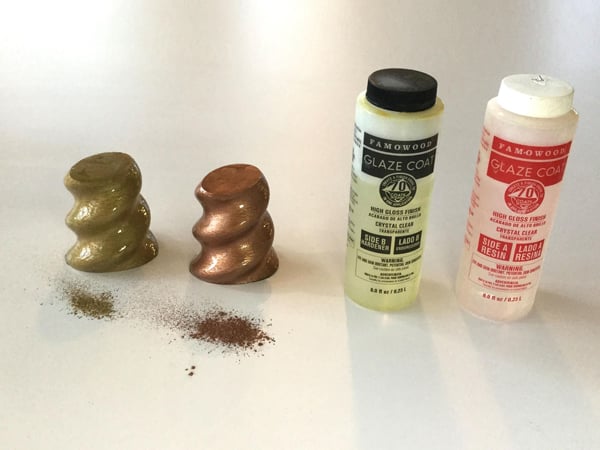
By mixing the metallic powder with clear gloss epoxy, you can give the surface of a print a convincing metallic finish. This is a quick, cost-effective alternative to smoothing and then metal plating a plastic 3D print.
How to apply:
- Prepare your workspace – Lay wax paper underneath your workstation for easy cleanup. Create an aluminum foil tray by layering 2 pieces of aluminum foil and folding the edges. This will be where you pour your mixed product to allow for longer working time.
- Mix 2 parts A with 1 part metallic powder. Mix well with a wooden popsicle stick until the powder is completely dissolved into Part A.
- Mix 1 Part A solution to 2 Parts B. Pour all contents into the plastic container, and vigorously mix together until they form a smooth, miscible blend. There should be no bubbles or clumps of powder remaining. Pour the solution onto the aluminum foil plate.
- Cure as you would regular epoxy.
- Once the curing process is complete, use steel wool to polish the object. You can vary the polishing time to achieve the optimal metallic shine.
This method will create a smooth, glossy, metallic surface on your object. The powder is completely mixed into the epoxy mixture, making it easy to apply.
If too much powder is added to the mixture, the end result will have a rough texture and have a leafed gold look.
Shoe Polish (for an “Antique” look)
After applying the powder XTC-3D mixture and allowing the object to set, shoe polish can be used to create an antique look.
How to apply:
- Dip a cloth into normal black or brown shoe polish, and move along the object using small circular motions.
- Allow drying for a few hours.
- Wipe the object using a clean microfiber cloth.
Polyurethane
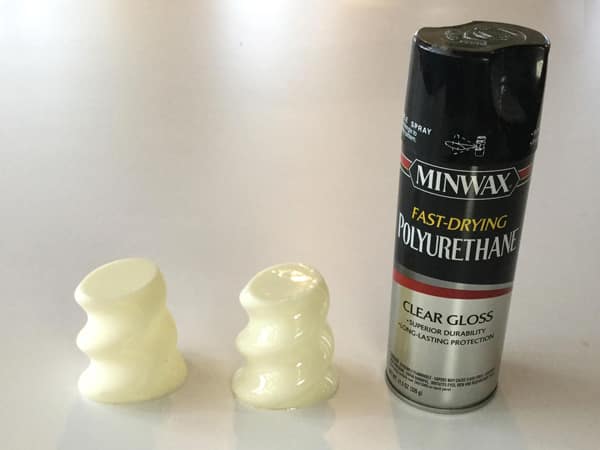
Polyurethane is basically a plastic in the liquid form until it is dried. You typically see it in furniture and wood applications as a top coat giving wood a protective coating and a shine. Using a water-based Polyurethane topcoat to a 3D print can help make the print shine and have a good looking glossy finish. In our tests, water-based polyurethane had better results than oil-based polyurethane. Polyurethane coating may not be best for functional parts that need to withstand heat. If you are using this, it should be for presentation pieces, or prints where appearance is more important than strength or function.
How to apply:
There are two Application Methods to choose from:
1) Spray
Polyurethane comes in a spray can. Like any gloss spray, this should be done with 2-3 coats in proper ventilation while leaving time to dry in between coats.
2) Sponge
Polyurethane gloss can also be applied with a sponge pad. This gives greater control than a spray application and can help get harder to reach parts of your 3D print.
Rustoleum Triple Thick Glaze
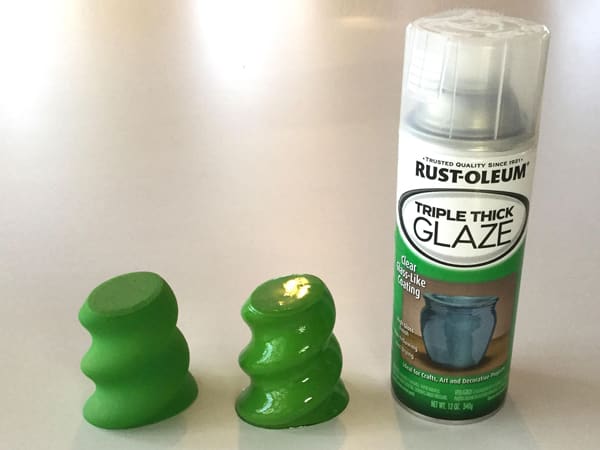
Full-color sandstone 3D prints normally have a matte surface finish and a gritty/ sandy feel.
In our tests, this product works very well for coating CJP printed parts from Zcorp or ProJet machines. The material I am referring to is commonly referred to as “full-color sandstone” prints.
How to apply:
The application of this is pretty simple. Spray an even coat (not too close!) to avoid dripping. Let dry. Use 2-3 coats. If you are interested in making your sandstone prints both strong and glossy, you can brush on 2 part epoxy, which will make your parts nearly unbreakable.
If you don’t have a spray booth, they’re readily available on Amazon and can really help with setting up a good even coat.
Although we’re sure there are other ways of glossing prints successfully, we wanted to share our research. If anyone has any other tips, post them in the comments!